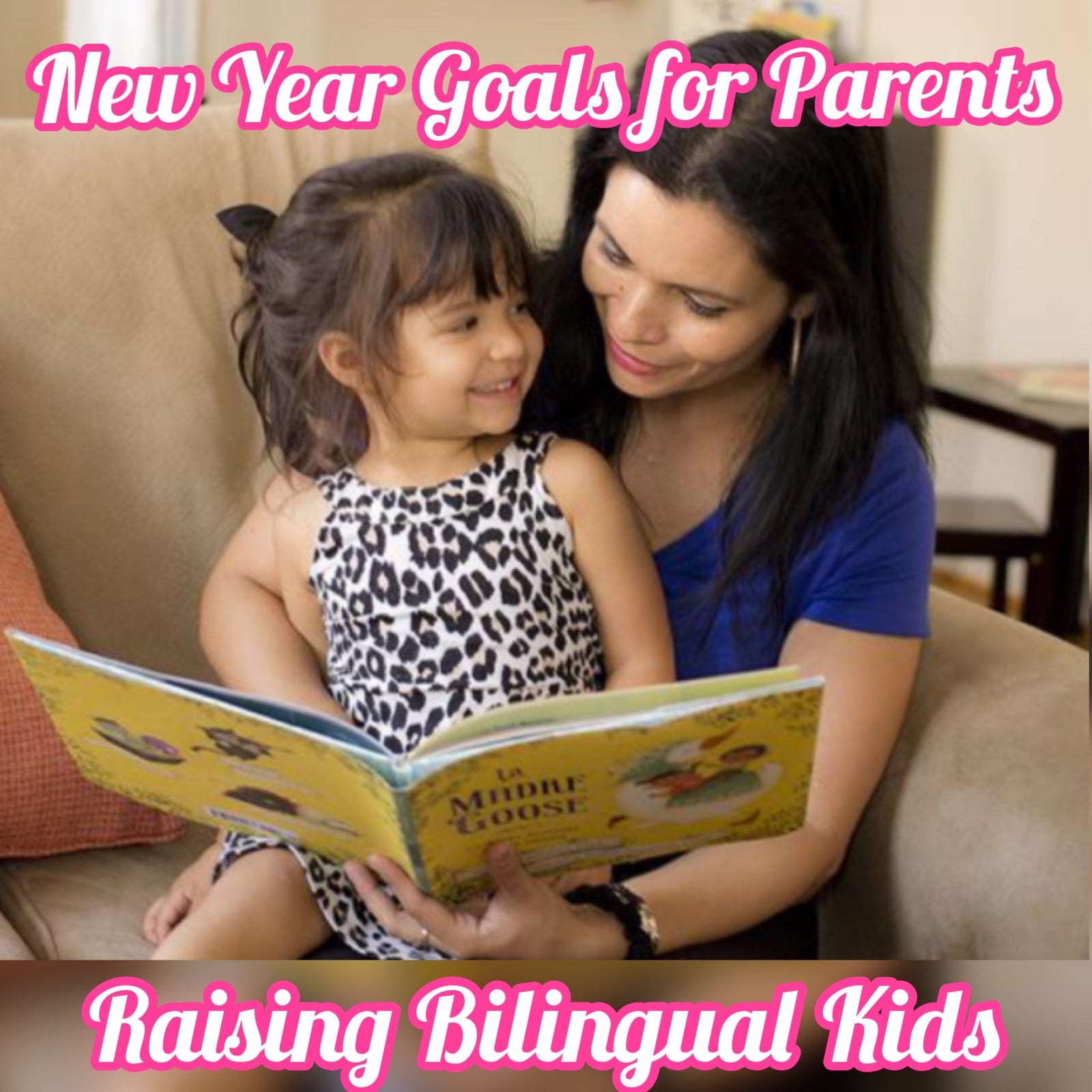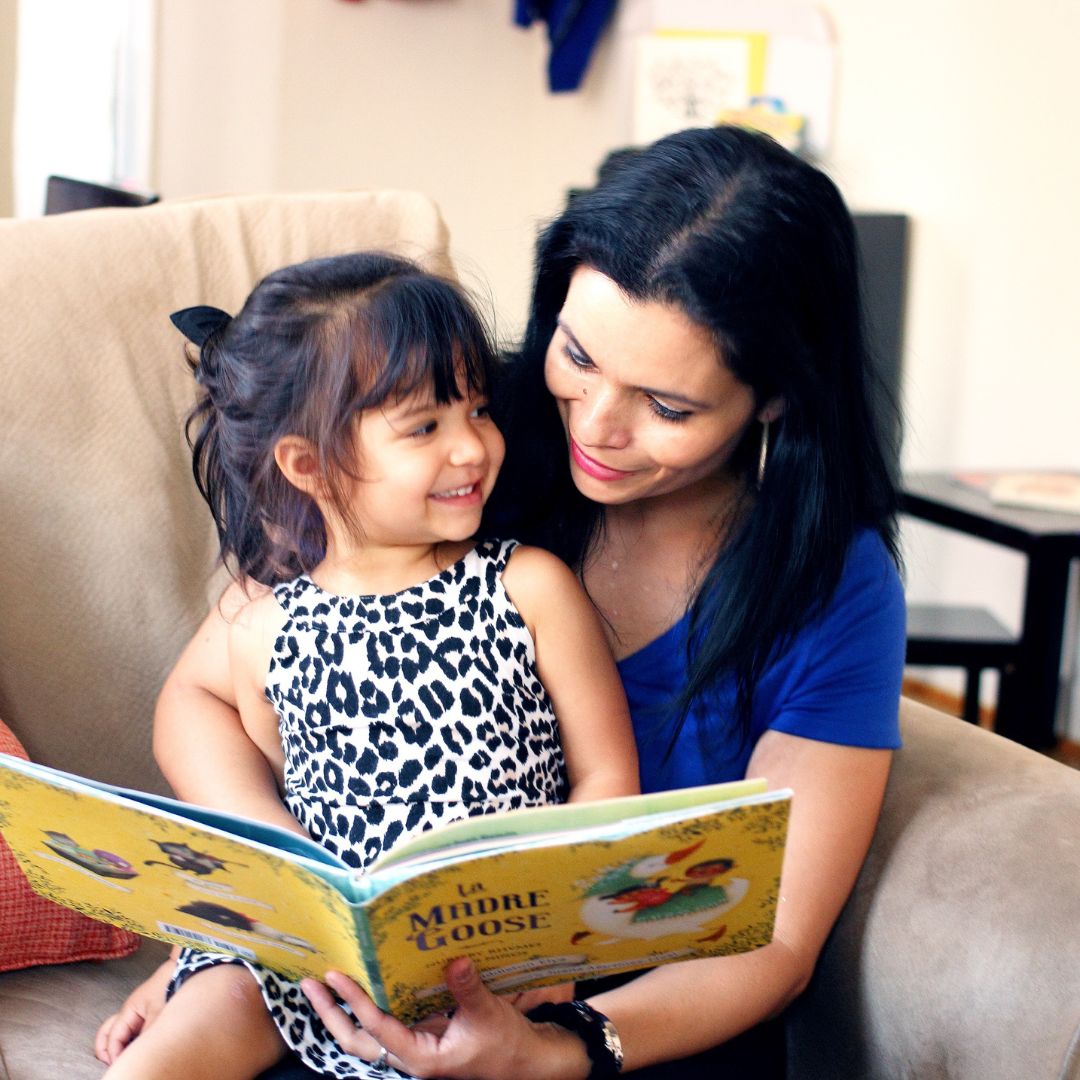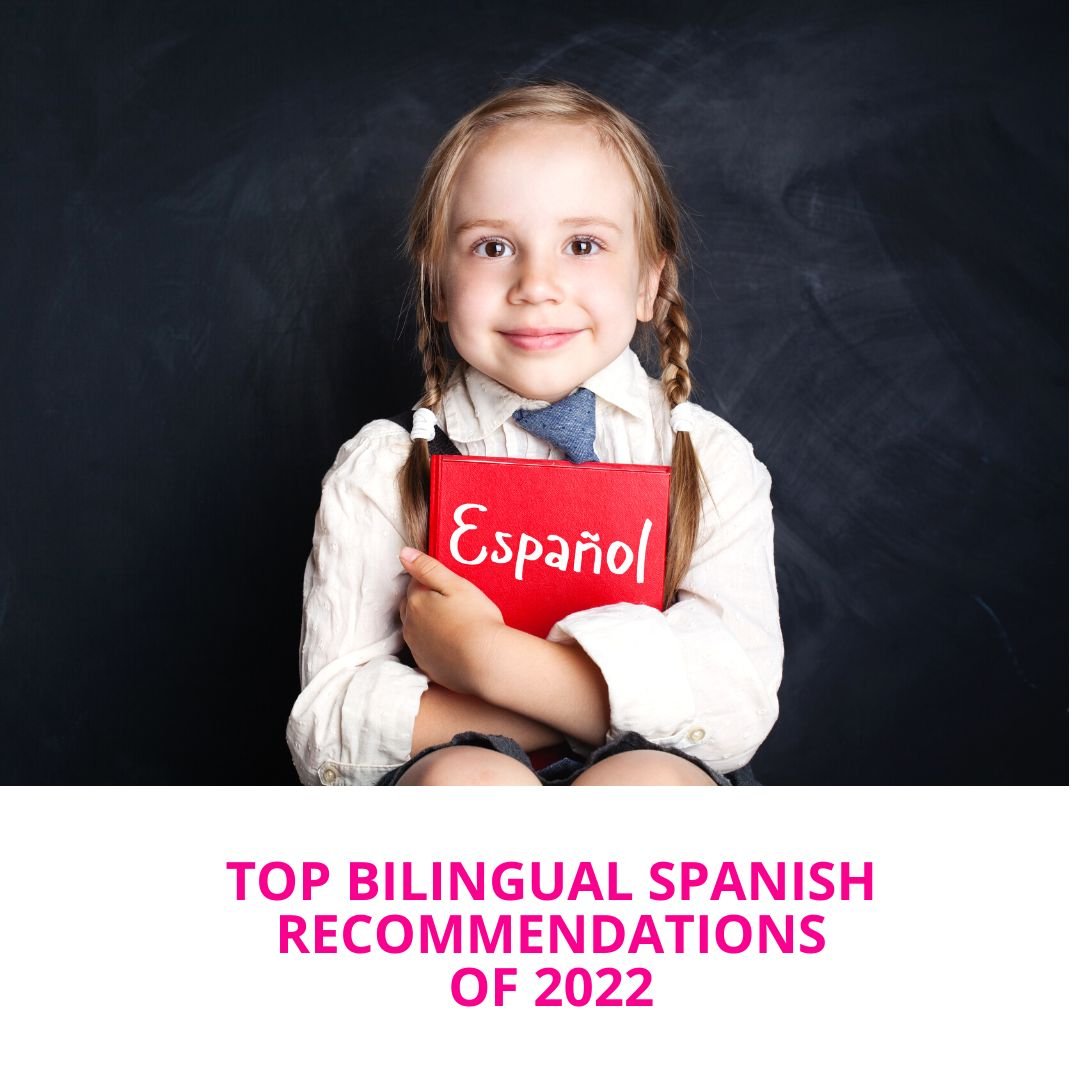
A new year brings with it new opportunities to define resolutions or goals. As a mom, it is important to me that my goals also include my child and family. As a Latina mom raising a bilingual, multicultural child, it is important to me that I continue on my bilingual journey, having goals, but not stressing out about specifics. You want your bilingual journey as a family to be natural and as stress free as possible. Here are my goals for the new year that you, as a bilingual or multicultural parent, may relate to or may inspire you:
New Year Goals For Raising a Bilingual Child
1. Talk to my child in Spanish even if he or she responds in English.
I am much more comfortable speaking in English. However, after I had my daughter, I made the conscious decision to speak to her in Spanish. I'll be honest in saying that I don't speak to her in Spanish all of the time but I try to speak to her 70-80% of the time. When I do catch myself speaking to her in English I quickly repeat what I say in Spanish. My daughter is 3 and a half and while she understands everything that I say in Spanish, she prefers to respond in English. Many times I'll ask her, "¿Y como se dice en Español?" (How do you say it in Spanish). Sometimes she will respond in Spanish, other times she refuses. I don't push her, but I know that as long as I continue, I'm on track with my mission.
2. Read to my child in Spanish.
I love reading. Unfortunately, I don't have much time to read myself, but that doesn't stop me from reading to my daughter. I read books in English and Spanish, alternating between the two. Sometimes she prefers that I read to her only in Spanish and that's great and I oblige. However, if she asks me to read only in English, I refuse. Even if it's just a couple of books at night, I make it a priority to read to her. I buy books and we go to the library as well.

3. Use playtime as an opportunity to interact with my child in Spanish.
Since children's imaginations are so great, playtime is an excellent opportunity to interact with your child in the second language. My personal favorite are puppets. In our house we have "Eli" the elephant who is a Latina elephant that loves ice cream, likes to stay up late, has a very sweet personality, and also has a little crush on my husband ;). She is a "Mexilombian," lol. "Chico," is a laid back Caribbean giraffe, who simply goes with the flow. My daughter knows that they do not speak English and I serve as the middle person when she is stuck or cannot communicate adequately. Besides offering an opportunity to interact in Spanish, they serve a great purpose when tantrums arise or I need her to listen, a win win in my book.
4. Offer entertainment in Spanish.
I'm not big on tablets or phones for education or entertainment purposes. However, when my daughter does watch tv or use a tablet, she is allowed to watch in Spanish. If we are watching a family movie, then we will all watch in English, since my husband does not speak Spanish. However, this is the exception and not the norm. You can find many shows on Netflix , Youtube, and Amazon Prime in Spanish. Simply go to the audio settings and find the Spanish audio option.

5. Find Spanish playgroup, group classes, or Spanish camps.
Now that my daughter is almost 4, I will be looking for additional opportunities to immerse her in Spanish. While the ideal scenario would be to immerse her in a dual language preschool, unfortunately, due to our location and budget, it hasn't been possible. That being said, I'm on a mission to find a reasonable play group, camp, or class that meets once a week so that she is exposed to the language outside the home in a fun environment with children her age.

6. Make Spanish learning fun.
Whether I'm dancing like a fool to Oso Gominola (The Gummy Bear Song in Spanish), taking funny "Word of the Day" videos (regular Instastories videos), or creating cutesy bilingual flashcards, games, or activities, I want to make learning fun. Yes, there are days when my daughter thinks that Spanish is a drag and I'll get the, "No, not in Español" bit, but then there are days when speaking Spanish is less of an effort for my daughter. Overall, the key is variety, and making it as fun as possible.
7. Adapt, give them space, and stress less.
As my child grows and develops, there will be changes in what she enjoys doing. One day it may be puzzles, so that may be an opportunity for a Spanish learning puzzle, another day it may be play-doh so that may be an opportunity to sculpt letters or practice colors in Spanish, now it's games, so we play Candyland, Sorry, and Go Fish all in Spanish. Adapt as they evolve and give them space or back off when you see they've had enough or it's not fun anymore. Finally, stress less. It's ok if your child doesn't speak perfectly or if they have a funny accent, mine does. Know your mission and bilingual journey but don't give up. You are doing a huge service to your child by being persistent and I promise you, they will thank you later as adults.
Final Thoughts on Goals for Raising Bilingual Children in the New Year
These are my seven goals for the new year, your's may be different. Set short term goals or goals that you can evaluate every 3-6 months. Try to make them measurable. For example, if your goal is to read to your child 4 times per week, mark it in your calendar. Better yet, you can print out a reading calendar and your child can put a sticker every day you read. Can you say accountability?
This is a family journey, find whatever works for you. If you're simply too tired, don't have the time, or think this is just too much for you to handle, I beg you to re-evaluate.
Like the blog? Was this helpful or inspiring? Raising bilingual Spanish kids that are connected to their Latino culture is at the core of my mission. Check out how I can help you do the same.
















Dejar un comentario